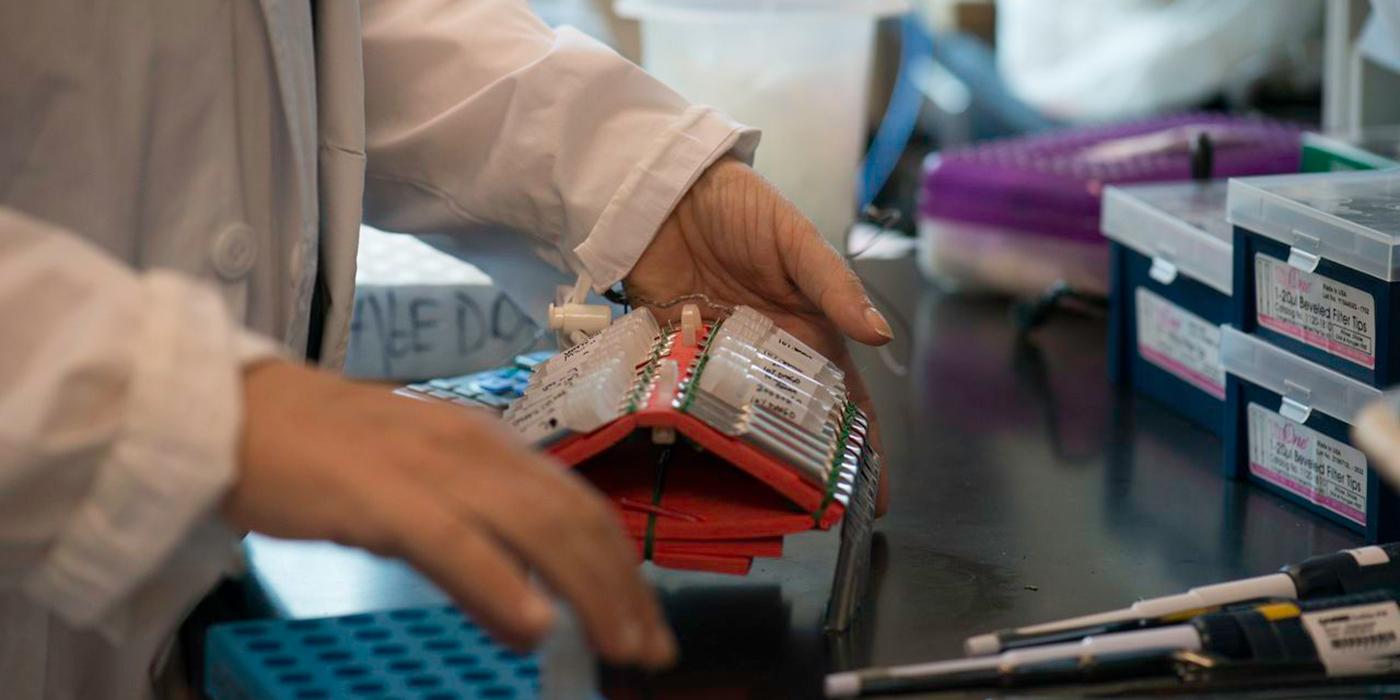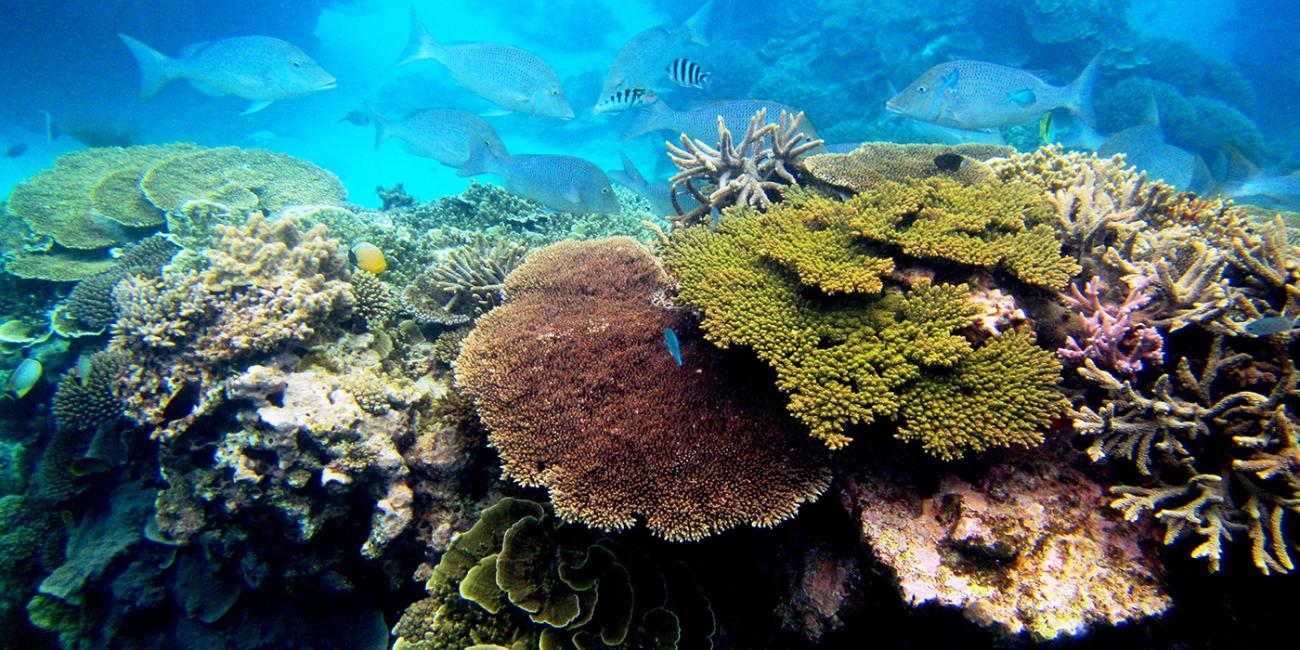Symbiodiniaceae Reproduction and Cryopreservation
Scientists at the Smithsonian Conservation Biology Institute’s Center for Species Survival (CSS) are working to cryopreserve complex organisms within the reef ecosystem, including symbiodiniaceae, the unique algae that lives inside coral.
Symbiodiniaceae and coral have a symbiotic relationship, meaning that they each provide something for the other. The coral provides a safe home for the symbiodiniaceae, and the symbiodiniaceae uses sunlight to produce food for the coral. When coral reefs stress, as is happening all over the world right now due to increased temperatures and light levels, the symbiodiniaceae exit the coral. Since the symbiodiniaceae give the coral its color, this process of the algae leaving the coral is called bleaching. Two widespread bleaching events occurred all over the world in 2014 and 2015.
Led by scientist Mary Hagedorn, founder of coral cryopreservation, CSS scientists set out to develop a cryopreservation technique for symbiodiniaceae. The process of cryopreservation is often different for each type of cell and each species of organism. Different cells might require different freezing rates or different cryoprotectants, which are solutions that are used to replace water in the cells prior to freezing to reduce or eliminate ice crystal formation to maintain intact cells. Using techniques and equipment developed for freezing human eggs, scientists were able to freeze symbiodiniaceae at ultra-rapid rates of thousands of degrees per minute, known as vitrification. Through the process of developing these techniques, they also discovered seasonality in the physiology of symbiodiniaceae, which affected cryopreservation success.
The ability to cryopreserve and bank symbiodiniaceae is important for the future of coral reefs, but also potentially important for agriculture and energy production with the growing focus on algae as an important source in both those fields.
Along the road to cryopreserving symbiodiniaceae, Hagedorn, in collaboration with Paul Yancey of Whitman College, discovered that symbiodiniaceae excrete a sugar called trehalose, which may be acting as a chemical cue on the reef to help unite symbiodiniaceae with their coral larvae hosts. This was an exciting discovery because the way that this relationship occurs on the reef is still a bit of a mystery.













